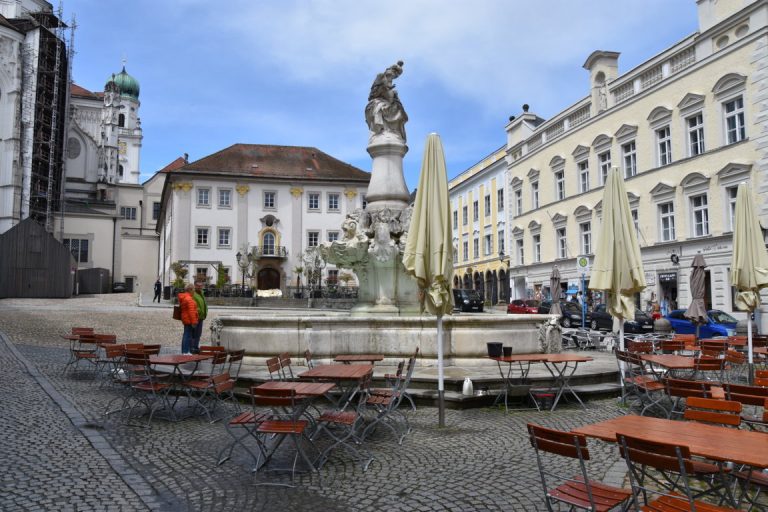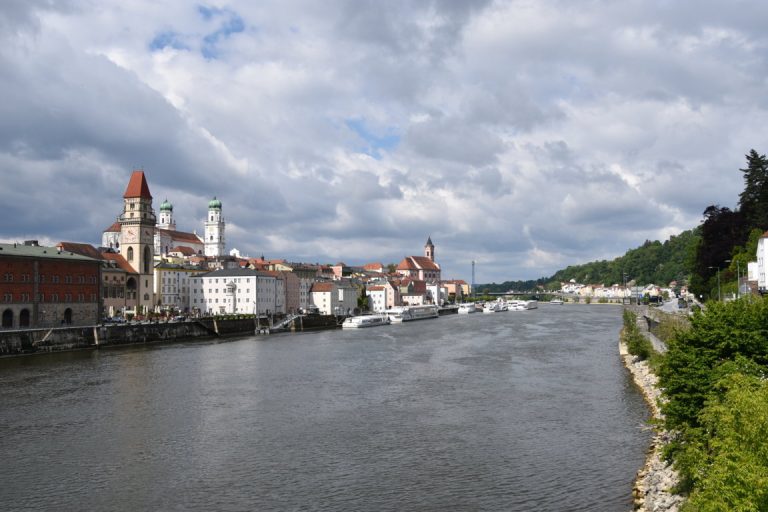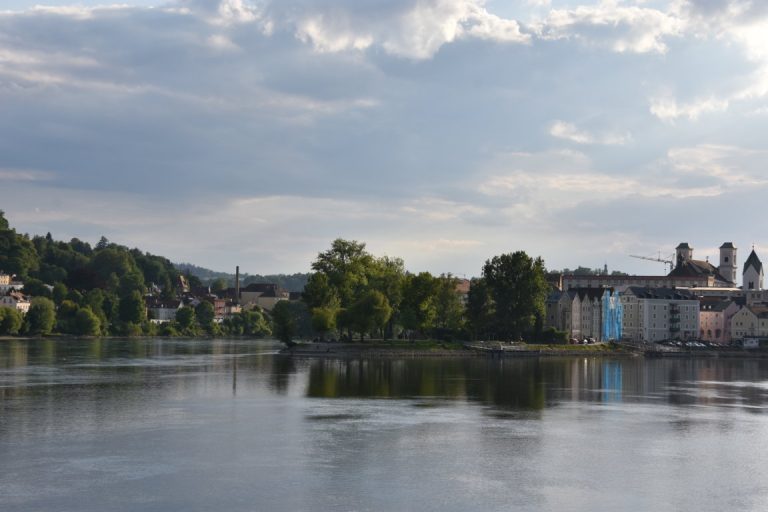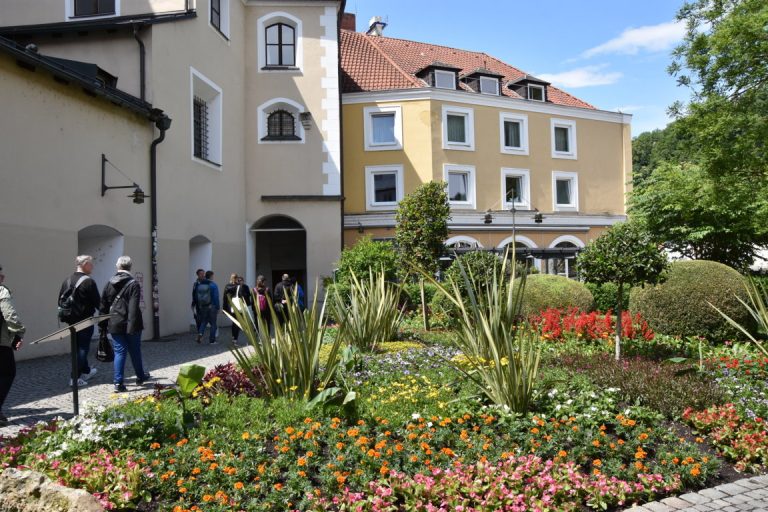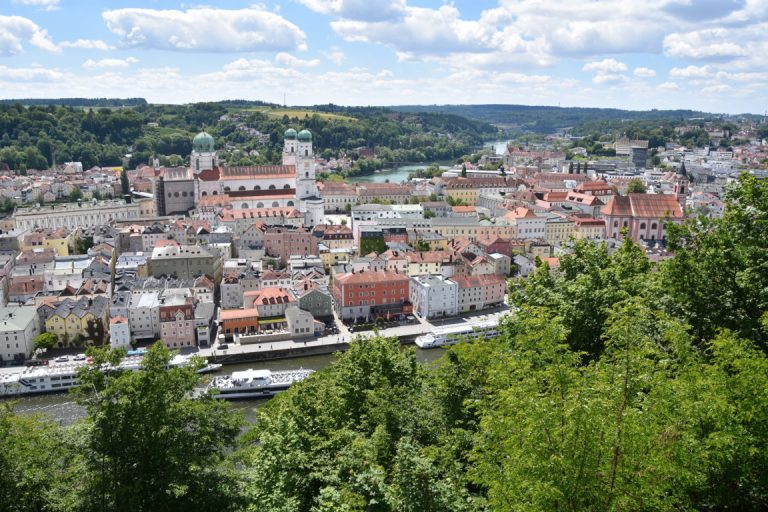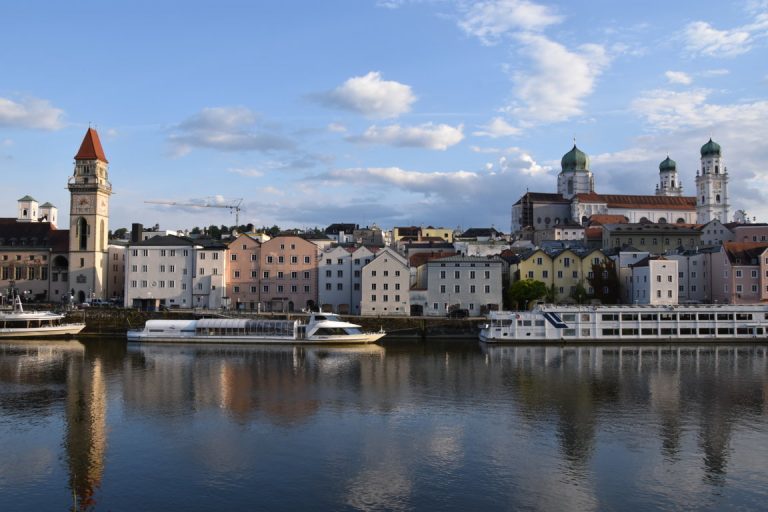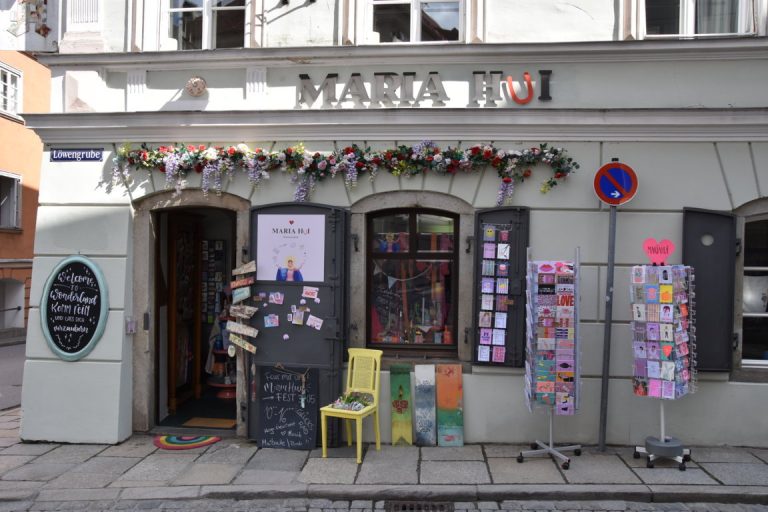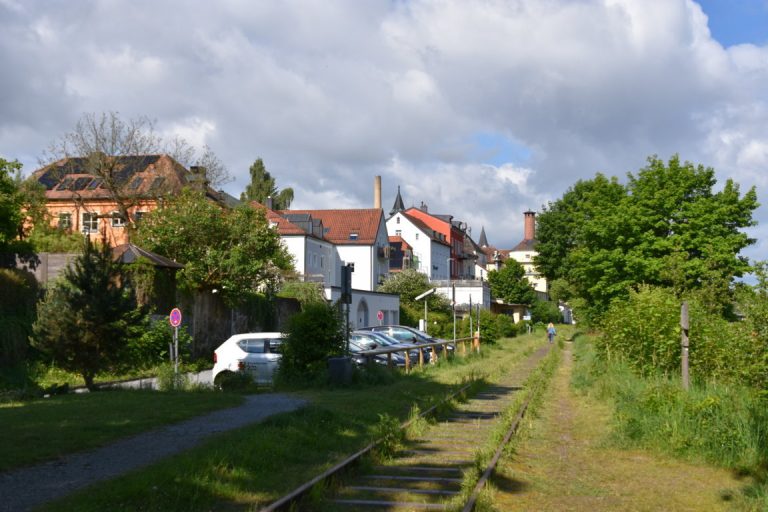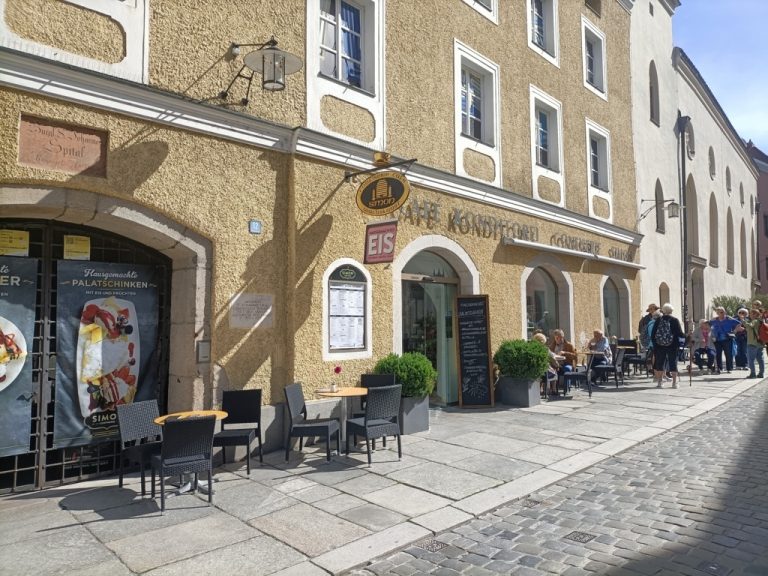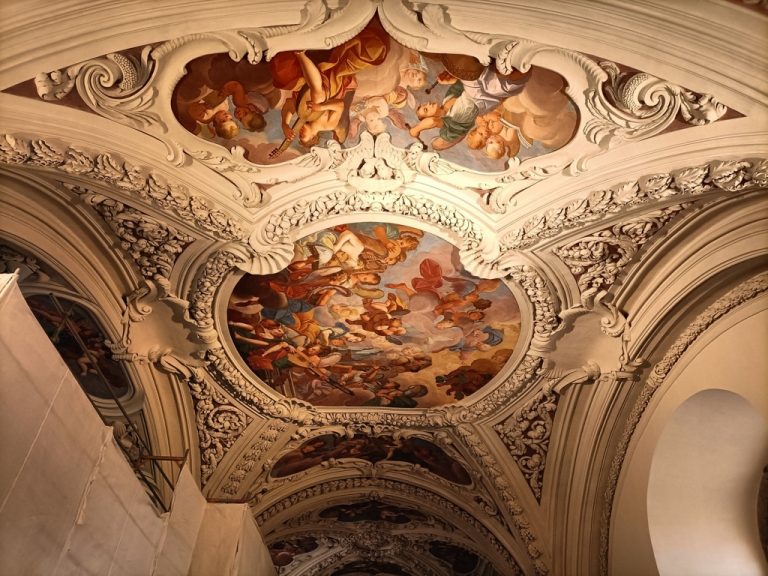Passau: The City of the Three Navigable Rivers
Passau is a German city, also known as the city of the three navigable rivers. Here, the Danube meets the Ilz and Inn rivers.
The Inn River originates in the Swiss Alps, west of St. Moritz, in the Engadin region. It flows through Switzerland, Austria, and Germany for 517 km, flowing into the Danube right in Passau. It is considered a tributary of the Danube. The Danube is the second longest river in Europe, after Russia’s Volga. Classified as an international waterway (2,488 km are navigable), it originates in the town of Donaueschingen, in the Black Forest in Germany, from the confluence of the Brigach and Breg rivers.
Passau
Passau
The Ilz River, often called “the black pearl,” has its sources in the Bavarian mountains Rachel and Lusen, near the Bohemian border. It is 65 km long, with a 1,000-meter drop from its source to its confluence with the Danube in Passau.
Today, the city is a highly appreciated tourist destination. The historic center is characterized by baroque buildings and narrow alleys winding along the river. Passau is also renowned for its rich history, culture, and architecture.
The city offers a wide variety of restaurants and cafés, ranging from classic Italian trattorias and pizzerias to traditional venues serving specialties like Schnitzel, Spätzle, and other typical German and Austrian dishes.
Passau has around 500 shops, from independent boutiques to major chains. For a more original experience, it is worth visiting Höllgasse, where you can find art galleries, jewelry stores, and ceramic workshops selling handcrafted works. The weekly market is held twice a week in Klostergartenplatz and offers a wide range of local products.
A distinctive feature of Passau’s historic center is the density of cafés and commercial activities. Café Simon, for example, is known for its fine chocolates and a wide variety of artisanal pastries. This historic family-run pastry shop boasts a long tradition. On the same street is also the city’s oldest inn: it is believed that Der grüne Baum (“The Green Tree”) has been operating since 1703.
Passau
Passau
The historic center stretches between the three rivers and features baroque-style buildings. Passau has about 50 churches, but the most important, imposing, and visited is St. Stephen’s Cathedral. It houses the largest organ in the world, with about 18,000 pipes. The Cathedral is located in the heart of the historic center and is also the largest baroque church in Germany.
Another monument much loved by tourists is the Veste Oberhaus fortress, located on the left bank of the Danube, opposite the historic center. Built in 1219, it long served as a castle and residence of the Prince-Bishops of the Diocese of Passau. From the fortress’s viewpoint, one can enjoy a magnificent panoramic view of Passau’s historic center and the confluence of the three rivers (Danube, Ilz, and Inn).
The city has faced numerous floods over the years. The marks left by the water are still visible on the walls of buildings, with indications of the heights reached during various floods.
Passau
Passau
To better discover Passau, visitors have the opportunity to explore it on foot or by boat. By choosing a walking or cycling tour, one can easily visit the city, as Passau is compact and most attractions are concentrated in the historic center, considered one of the most beautiful in Germany. Tourists can visit the various churches, walk along the rivers, and immerse themselves in the atmosphere of the old city.
A must-see is the famous Ludwigstrasse, located in the historic center, with numerous shops and cafés that contribute to the city’s Mediterranean atmosphere. Another interesting attraction is the fountain in Residenzplatz, called the Wittelsbach Fountain, created in 1903 to commemorate the centenary of Passau’s annexation to Bavaria. The fountain is in baroque style. On the right bank of the Inn River, you can admire the imposing round tower with a pointed roof, called Schaiblingsturm (Schaibling Tower), once a defensive tower against enemy attacks.
Other places of interest include the Passau Glass Museum (with tens of thousands of pieces of Bohemian glass), a modern art museum, and a diocesan museum dedicated to religious art. A fascinating suggestion for visitors is to stroll along the “Artists’ Alley” (Höllgasse), an area known for the decorative arts studios and workshops hosted on the ground floors of historic buildings.
Passau
Passau
By opting for the boat tour, you can admire splendid views of the old city, including the ancient Veste Oberhaus fortress, located on the left bank of the Danube. The complex is 105 meters above the valley of Mount St. George, between the Danube and Ilz, and is protected by steep slopes on both sides. On the right bank of the Danube, in the city center, stands out the Altes Rathaus (Old Town Hall), an imposing building constructed in Venetian style, one of the most representative buildings of the historic center. Also on the right bank of the Inn, in a dominant position, stands the Mariahilf Pilgrimage Church, another well-visible landmark in the urban landscape.
The best time to visit Passau is in May, July, August, and September, when temperatures are mild and rainfall is scarce.
Passau
Passau
Today, Passau is also known for its cruise industry and is an excellent departure port for cruises along the Danube, playing a significant role in the local economy. In the city’s port, there are 17 docking points for cruise ships, where passengers can conveniently embark and disembark.
During my stay in Passau, I stayed at the Rotel Inn Passau hotel, located on the right bank of the Danube. It is a hotel with unique, modern architecture and vibrant colors, well integrated into the landscape, creating a simple and relaxing atmosphere. The hotel is close to the center and public transport station, making it ideal for short stays. I chose to stay for 11 days, which gave me the opportunity to get to know the city of Passau well.
Don’t miss news, updates, and information on port stops on Cruising Journal.

